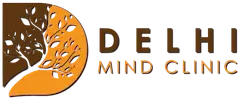Depression Treatment
Depression Treatment

Key facts-
- Depression is a medical illness and not just a passing feeling
- About 5% of the adult population suffers from clinical depression
- Depression is a leading cause of disability worldwide and is a major contributor to the overall global burden of disease
- Depression is a treatable illness
- 280 million people in the world have depression.
- Although there are known, effective treatments for mental disorders, more than 75% of people in low- and middle-income countries receive no treatment
Signs and symptoms of Depression-
If you have been experiencing some of the following signs and symptoms most of the day, nearly every day, for at least two weeks, you may be suffering from depression:
- Persistent sad, anxious, irritable or “empty” mood
- Feelings of hopelessness, or pessimism
- Feelings of irritability, frustration, or restlessness
- Feelings of guilt, worthlessness, or helplessness
- Loss of interest or pleasure in hobbies and activities
- Decreased energy, fatigue, or feeling “slowed down”
- Difficulty concentrating, remembering, or making decisions
- Difficulty sleeping, early morning awakening, or oversleeping
- Changes in appetite or unplanned weight changes
- Thoughts of death or suicide, or suicide attempts
- Aches or pains, headaches, cramps, or digestive problems without a clear physical cause that do not ease even with treatment
- Suicide attempts or thoughts of death or suicide
Not everyone who is depressed experiences every symptom. Some people experience only a few symptoms while others may experience many. Several persistent symptoms in addition to low mood are required for a diagnosis of major depression, but people with only a few – but distressing – symptoms may benefit from treatment as well. The severity and frequency of symptoms and how long they last will vary depending on the individual and his or her particular illness. Symptoms may also vary depending on the stage of the illness
Types of Depressive syndromes-
There are different types of depression, some of which develop due to specific circumstances.
- Major depression, which includes symptoms of depression most of the time for at least 2 weeks that typically interfere with one’s ability to work, sleep, study, and eat.
- Persistent depressive disorder(also called dysthymia), which often includes less severe symptoms of depression that last much longer, typically for at least 2 years.
- Perinatal depression, which occurs when a woman experiences major depression during pregnancy or after delivery (postpartum depression).
- Seasonal affective disorder, which comes and goes with the seasons, typically starting in late fall and early winter and going away during spring and summer.
- Depression with symptoms of psychosis, which is a severe form of depression where a person experiences psychosis symptoms, such as delusions (disturbing, false fixed beliefs) or hallucinations (hearing or seeing things that others do not see or hear).
Individuals with Bipolar disorder (formerly called manic depression or manic-depressive illness) also experience depressive episodes, in which they feel sad, indifferent, or hopeless, combined with a very low activity level. But a person with bipolar disorder also experiences manic episodes, or unusually elevated moods in which the individual might feel very happy, irritable, or “up,” with a marked increase in activity level.
Treatment for depression
If you are diagnosed with Clinical Depression, or you suffer from any of the above-mentioned symptoms please discuss the various treatment options with your psychiatrist. However please remember that even chronic and severe depression patients can be effectively treated with the right approach.
Scientific treatment protocols recommend-
Medications-
Medications which are safe, effective, and with minimum side effects are available for treating depression. Current medications are not habit-forming or addictive and can be safely taken away under medical supervision.
The most common groups of medication used can be
- Selective serotonin reuptake inhibitors (SSRIs).
citalopram), escitalopram , fluoxetine paroxetine, sertraline and vilazodone
- Serotonin-norepinephrine reuptake inhibitors (SNRIs).
duloxetine , venlafaxine , desvenlafaxine, and levomilnacipran
- Atypical antidepressants.
Bupropion, mirtazapine, nefazodone, trazodone and vortioxetine
- Tricyclic antidepressants.
Imipramine, nortriptyline, amitriptyline, doxepin, trimipramine etc
- Monoamine oxidase inhibitors (MAOIs).
Tranylcypromine, phenelzine, and isocarboxazid — may be prescribed, typically when other drugs haven’t worked.
Other medications. Other medications may be added to an antidepressant to enhance antidepressant effects. Your doctor may recommend combining two antidepressants or adding medications such as mood stabilizers or antipsychotics. Anti-anxiety and stimulant medications also may be added for short-term use.
Psychotherapy
Several types of psychotherapy (also called “talk therapy” or “counseling”) can help people with depression by teaching new ways of thinking and behaving and how to change habits that contribute to depression. Major models of therapy used in clinical practice are as follows-
- Cognitive Behavior Therapy
- Interpersonal therapy
- Psychodynamic therapy
- Psychoanalytical therapy
- Behavioral therapy
- Rational Emotive Behavioral therapy
Other methods may include Brain stimulation methods like
- MECT- Modified Electro Convulsive therapy
- DBS- Deep Brain Stimulation
- RTMS- repetitive transcranial magnetic stimulation (RTMS)
- vagus nerve stimulation (VNS).
